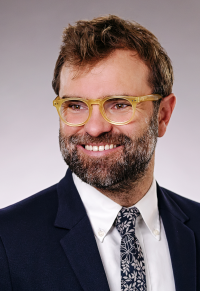-
Princeton University

Architecting soft functional materials with instabilities.
The talk is concerned with the directed control of fluidic instabilities to program shapes. While instabilities are traditionally regarded as a route towards failure in engineering, I aim to follow a different path; taming fluidic instabilities and harnessing the patterns and structures they naturally form. This methodology capitalizes on the inherent periodicity, scalability, versatility and robustness of mechanical instabilities. This new design paradigm – building with instabilities – calls for an improved understanding of instabilities and pattern formation in complex media. While stability analysis is a classic topic in mechanics, little is known on the so called inverse problem: finding the optimal set of initial conditions and interactions that will be transmuted into a target shape without direct external intervention. While the epicenter of the research is fundamental, utilizing instabilities to structure soft materials opens new research directions in the study of the behavior and deformations of architected soft materials, inspired by natural soft-materials that self-assemble into well defined structures to display remarkable properties. More broadly, the talk is rooted on the basis of recognizing model experiments as a valuable and powerful tool for discovery and exploration, in turn seeding the development of formal and predictive models.
PT Brun received his bachelor’s degree in Mechanical Engineering from Ecole Polytechnique, Palaiseau in 2008, his Master’s degree in Advanced Chemical Engineering from the University of Cambridge in 2009 and doctorate degree in Mechanical Engineering from Sorbonne University in 2012 for work on the dynamics and instability of viscous and elastic threads. PT then joined the Ecole Polytchnique Federale de Lausanne (EPFL) as a postdoctoral fellow where he specialized on interfacial fluid mechanics and instabilities. In 2014 he joined MIT as an instructor in Applied Mathematics and recently moved to Princeton, where he is a faculty in the department of Chemical and Biological Engineering. His research is curiosity-driven with focus on the quantitative modeling of nonlinear fluid and elastic processes in complex soft materials and the mathematical description of structure formation in inert and biological systems. His work is interdisciplinary and aims to study pattern forming instabilities with view to passively fabricate hierarchical and topological structures in a broad range of materials His research is conducted hand in hand with the experimental investigations of model experiments. With this perspective, he studies problems involving thin fluid films, viscous threads (3D printing), microfluidics systems, but also elastic shells, swelling and elastocapillarity.
